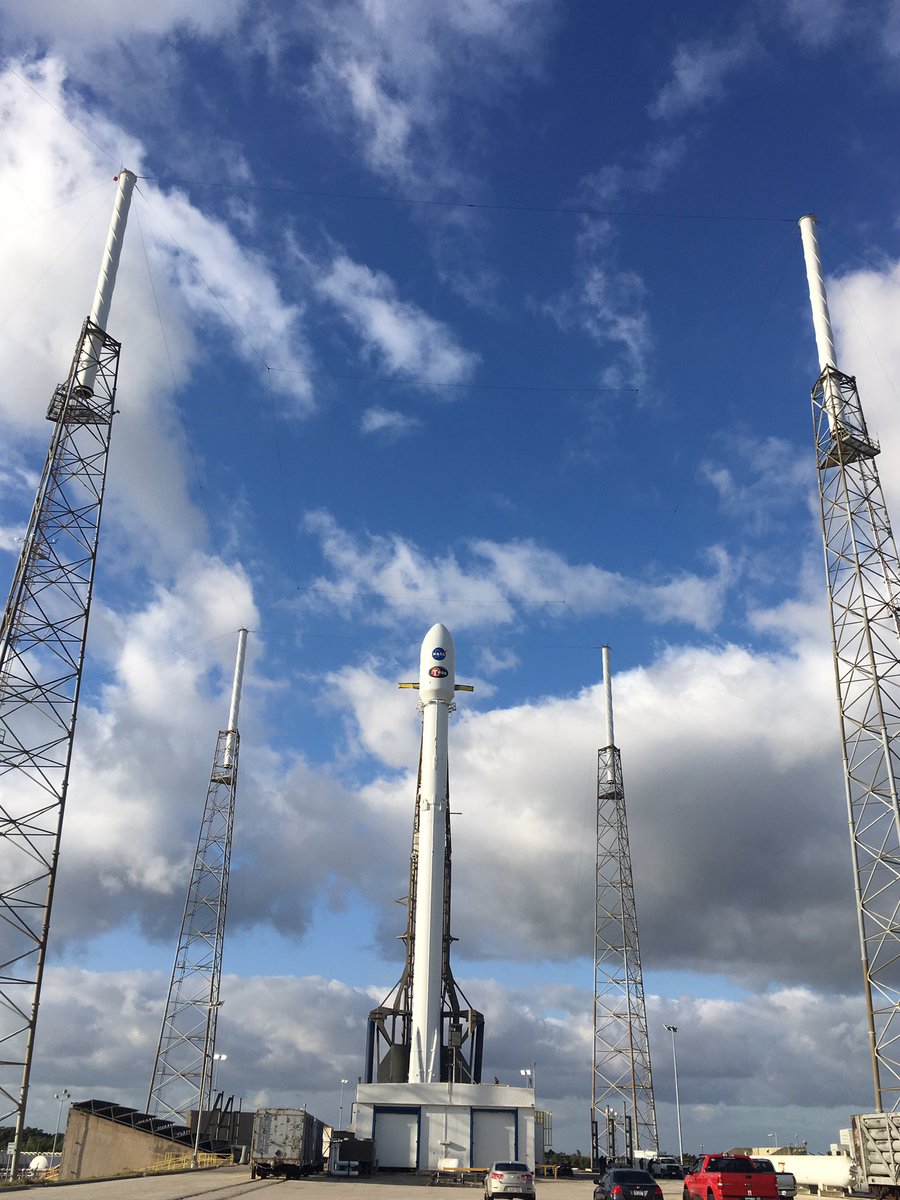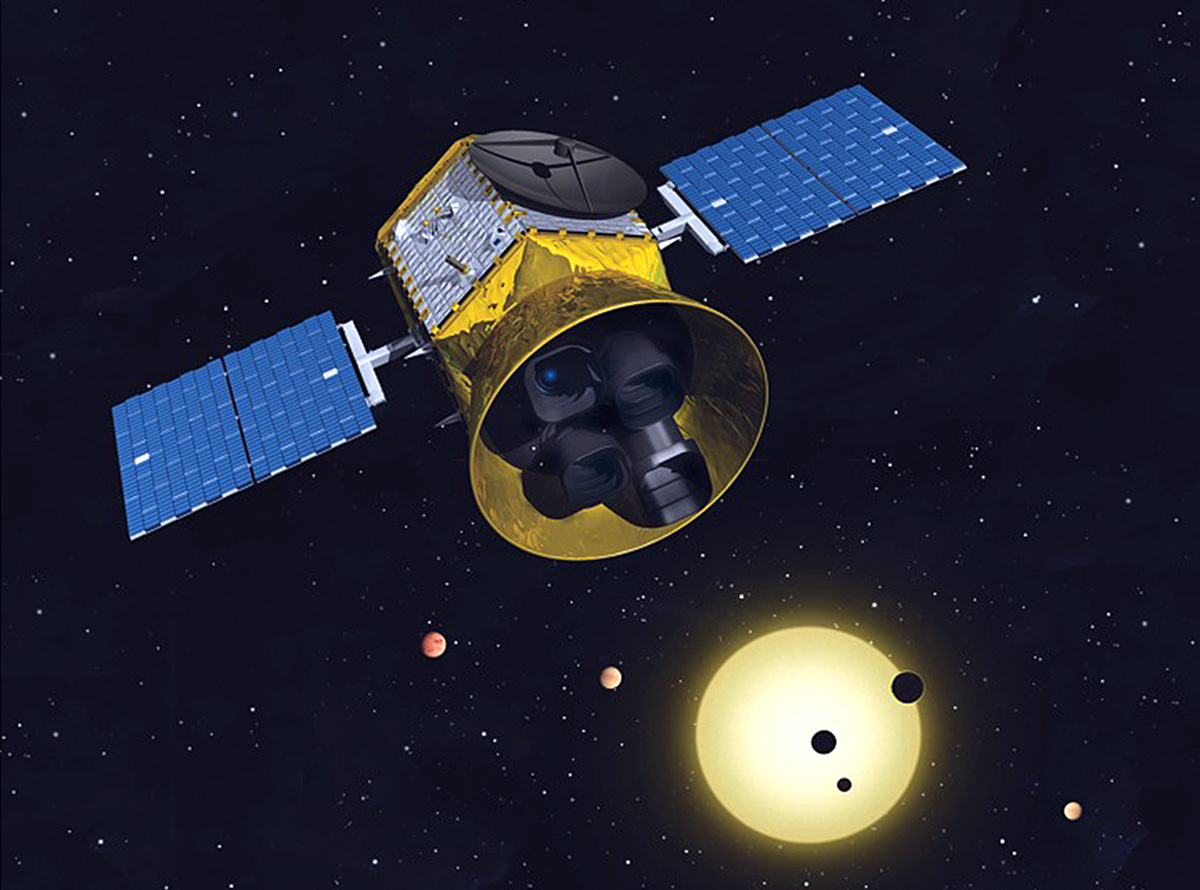The Transiting Exoplanet Survey Satellite (TESS) is scheduled to lift off from Cape Canaveral Air Force Station here today at 6:32 p.m. EDT (2232 GMT). Watch the launch live at Space.com, courtesy of NASA TV, beginning at 6 p.m. EDT (2200 GMT). The weather looks good for the launch, with an 80-percent chance of clear skies at launch time, according to the Air Force's 45th Weather Squadron watching over the mission.

SpaceX has re-flown 11 of these landed boosters. But the Falcon 9 lifting off today is brand-new, Hans Koenigsmann, SpaceX vice president of build and flight reliability, said during a pre-launch briefing yesterday (April 15).
Shortly after liftoff, SpaceX will attempt to land the first stage of the two-stage Falcon 9 on a robotic ship stationed in the Atlantic Ocean. To date, the company has pulled off such first-stage touchdowns 23 times during Falcon 9 launches, with about half of the boosters coming down on "drone ships" and the other half returning to terra firma. [NASA's TESS Exoplanet-Hunting Mission in Pictures]
SpaceX also aims to recover the payload fairing, the nose cone that will protect TESS during liftoff — but not using the net-equipped boat named Mr. Steven. The fairing halves will float back to Earth under parachutes and splash down in the Atlantic Ocean, where company personnel will retrieve them via boat, Hans Koenigsmann, SpaceX vice president of build and flight reliability, said during a pre-launch briefing yesterday (April 15). The company has made two attempts to catch its payload fairings without success, but hopes to recover fairings (which cost up to $6 million, SpaceX CEO Elon Musk has said) for later reuse.

TESS will use four sensitive cameras to hunt for exoplanets around stars relatively close to the sun — work it will begin after getting to its final orbit, a highly elliptical 13.7-day path around Earth, in June. Those cameras will notice the tiny brightness dips caused when alien worlds cross their host stars' faces.
TESS will likely find several thousand exoplanets during its two-year prime mission, mission officials have said. Some of these will be close enough for Earth to be investigated in depth by other instruments, including NASA's $8.8 billion James Webb Space Telescope, which is scheduled to launch in May 2020.
The TESS mission is capped at $200 million, not including launch costs, which add $87 million to the final tally, NASA officials have said.
Sign up for the Live Science daily newsletter now
Get the world’s most fascinating discoveries delivered straight to your inbox.
Visit Space.com Monday, April 16 for complete coverage of NASA's TESS mission launch. A live webcast on the launch begins at 6 p.m. EDT (2200 GMT).
Follow Mike Wall on Twitter @michaeldwall and Google+. Follow us @Spacedotcom, Facebook orGoogle+. Originally published on Space.com.











